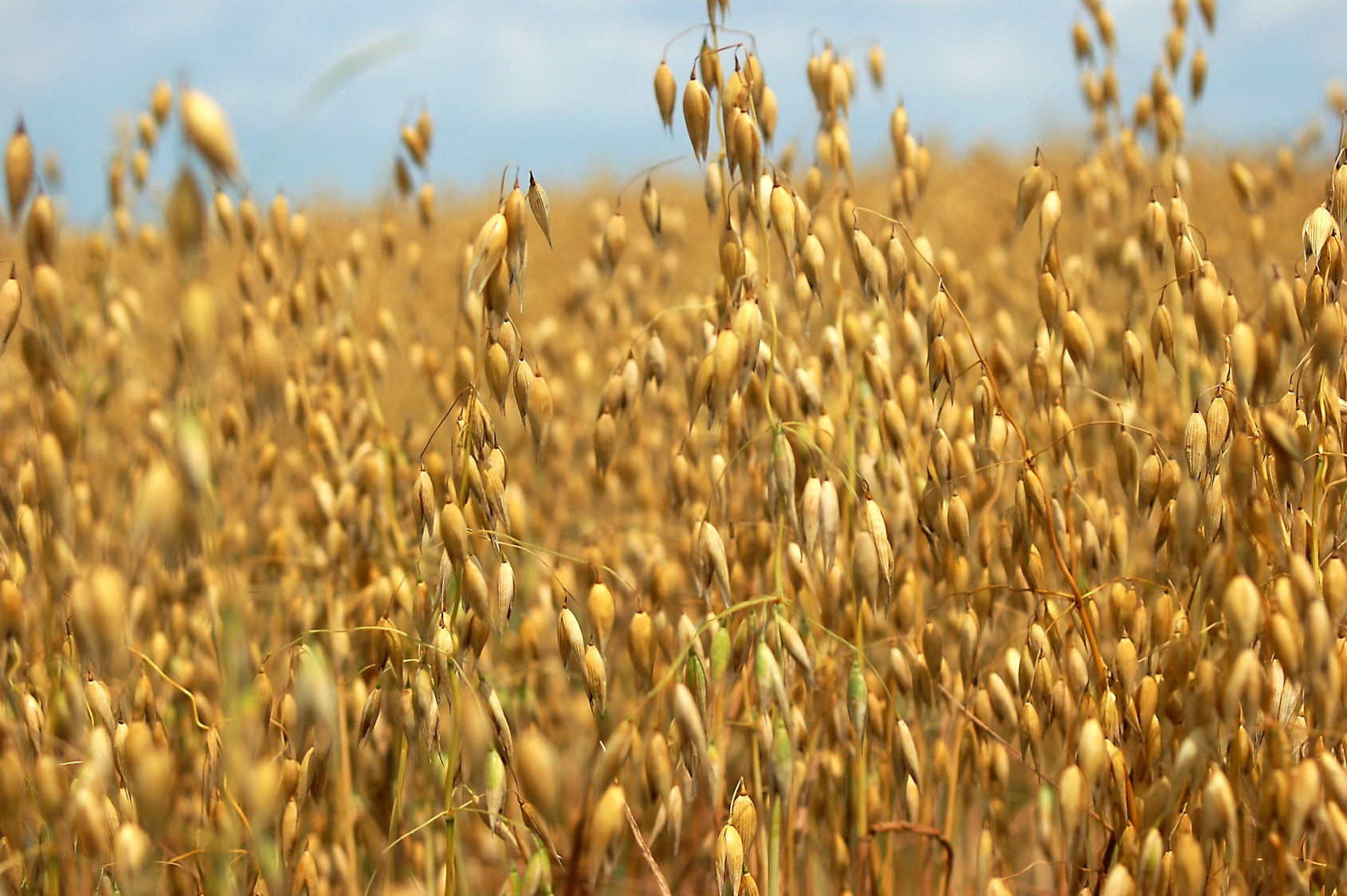Avena sativa (L)
Synonyms: Groats, oatmeal, common oat
Order: Graminaceae
Description: This is an annual cereal grass with a fibrous root producing a smooth, hollow, jointed stem, growing up to 120cm tall, with more or less rough pale green, narrow flat leaves. The flowers are arranged in a loose terminal panicle from 15-30cm long consisting of two-flowered spikelets up to 2.5cm long. The hairy, grooved grain is narrow with almost parallel sides. Avena has a wide distribution as a cereal crop.

Parts used: The whole flowering plant (oatstraw) and the seed
Collection: The straw is collected in midsummer, the seed usually in August.
Constituents: Saponins (including avenacosides A and B), alkaloids (including indole alkaloid, gramine, trigonelline, avenine), sterol (avenasterol), flavonoids, silica (particularly in the straw), starch (50% in the seeds), protein (including gluten), minerals (calcium, iron, phosphorus, copper, magnesium, zinc), vitamins B1, B2, D and E, carotene, fat, fixed oil
Actions: antidepressive, thymoleptic, cardiac tonic, nervous system restorative, nutritive, demulcent, vulnerary
Indications: depression, melancholia, menopausal neurasthenia, general debility.
Therapeutics and Pharmacology: Avena is a nourishing herb applicable to any state of debility and exhaustion and during convalescence. It is particularly suited as a long-term treatment in nervous debility, making gradual but sustained progress in fighting off shingles and other forms of herpes, neuralgia, neuritis and even chronic depression. It is also of benefit as part of a regime for people attempting to withdraw from an addiction to alcohol, smoking, tranquillizers or other drugs. The mild sedative and hypnotic properties are due to the indole alkaloid gramine. The alkaloid avenine stimulates the central nervous system and is the component which causes horses fed on large quantities of oats to become highly excitable.
Oatbran and, to a lesser extent, oatmeal, are rich sources of inositol, important for the proper metabolism of fats and for reducing blood cholesterol levels, while the silica content has local healing effects which can help skin problems when applied locally. It may be applied as a poultice for wounds, burns and neuralgia. Oatstraw can be used for thyroid and oestrogen deficiency, for degenerative diseases such as multiple sclerosis, and for colds, especially if recurrent or persistent. Regular use of oats as a food will help to correct constipation.
Combinations: May be used with Cyprepedium or Scutellaria in depression.
Caution: Large quantities may cause headaches at the back of the head. Gluten may be a problem in sensitive individuals (e.g those with coeliac disease and multiple sclerosis); allow the decoction or tincture to settle then decant the clear liquid only for use. Ensure that there has been no contamination by agrochemicals.
Preparation and Dosage: (thrice daily)
Oats are most conveniently taken in the form of porridge or gruel.
Regulatory Status: GSL
Liquid Extract: 1:1 in 25% alcohol, 0.6-2ml
Tincture: 1:5 in 45% alcohol, 1-5ml
Additional Comments: Oats have been eaten since prehistoric times. Dr. Bach recommended his Wild Oats flower remedy for times of uncertainty and dissatisfaction. Ayurvedic medicine prescribes oats for opium withdrawal. Skin preparations containing oat extracts are used in orthodox medicine for eczema and dry skin.
Bibliography
BHMA 1983 British Herbal Pharmacopoeia, BHMA, Bournemouth.
Curtis, S. and Fraser, R. 1991 Natural Healing for Women, Pandora Press, London
Grieve, M. 1931 A Modern Herbal, (ed. C.F. Leyel 1985), London.
Hoffmann, D. 1990 The New Holistic Herbal, Second Edition, Element, Shaftesbury.
Lust, J. 1990 The Herb Book, Bantam, London.
Mabey, R. (ed.) 1991 The Complete New Herbal, Penguin, London.
Mills, S.Y. 1993 The Essential Book of Herbal Medicine, Penguin, London (First published in 1991 as Out of the Earth, Arkana)
Mills, S.Y. 1993 The A-Z of Modern Herbalism, Diamond Books, London.
Ody, P. 1993 The Herb Society's Complete Medicinal Herbal, Dorling Kindersley, London.
Polunin, M. and Robbins, C. 1992 The Natural Pharmacy, Dorling Kindersley, London.
Weiss, R.F. 1991 Herbal Medicine, Beaconsfield Arcanum, Beaconsfield.
Wren, R.C. 1988 Potter's New Cyclopaedia of Botanical Drugs and Preparations, C.W.Daniel, Saffron Walden.










